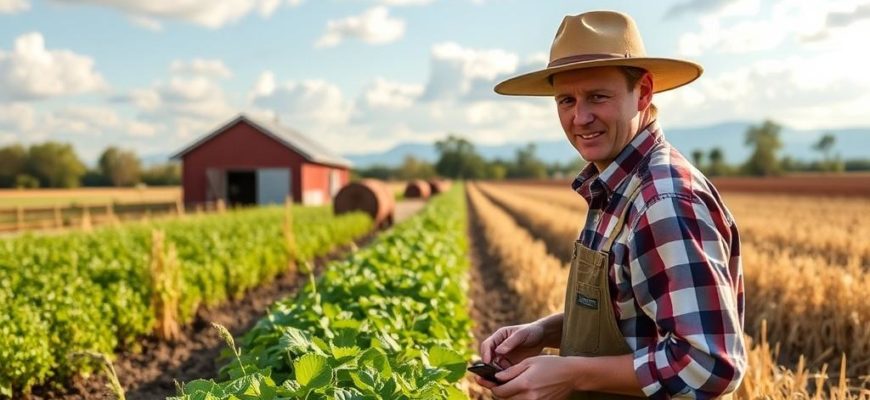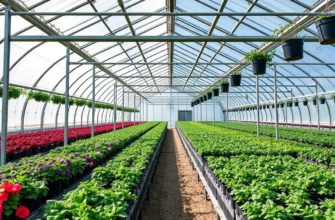Международное название:
Синонимы:
Характеристики:
| Сложность: | |
| Цикл развития: | |
| Световой режим: | |
| Режим полива: | |
| Температура: | |
| Почва: | |
| Ключевая черта: |
Цвет листвы
Цвет бутонов
Размеры цветка
Систематика:
| Домен: | |
| Царство: | |
| Отдел: | |
| Класс: | |
| Порядок: | |
| Семейство: | |
| Род: |
Climate change is no longer a distant headline; it’s showing up in fields, pastures, and orchards. If you make your living from the land, you’ve probably noticed shifts in the growing season, new pests, heavier storms, or stubborn droughts. Future-proofing your farm is about more than reacting to one bad season — it’s about building resilience into your soils, water systems, crops, animals, finances, and community connections so you can weather whatever comes next. In this article I’ll walk you through practical, proven strategies and decision-making frameworks that help farms of all sizes adapt and thrive. Think of this as a friendly, step-by-step guide you can return to every year as conditions change and your knowledge grows.
- Why Climate Change Demands a New Way of Farming
- Getting Started: Assess Risks and Set Priorities
- Know your local climate trends
- Map your vulnerabilities
- Set realistic, flexible goals
- Soil Health: The Foundation of Resilience
- Cover crops and living mulches
- Reduced tillage and no‑till
- Organic matter and compost
- Soil testing and nutrient cycling
- Water Management: Use Less, Store More, and Be Efficient
- Improve irrigation efficiency
- Recharge and store water
- Soil and landscape practices that conserve moisture
- Smart scheduling and sensors
- Crop Choices and Diversification: Spread the Risk
- Choose climate-resilient varieties
- Mix perennials and annuals
- Stagger plantings and extend harvest windows
- Include cover crops and green manures
- Livestock Strategies: Managing Heat, Feed, and Disease
- Shade, water, and ventilation
- Pasture management and feed diversity
- Biosecurity and veterinary planning
- Infrastructure and Energy: Building Durable, Flexible Systems
- Design for extremes
- Energy resilience and renewables
- Storage and cold chain management
- Technology and Data: Make Smarter Decisions
- Remote sensing and precision agriculture
- Decision support tools
- Record-keeping and monitoring
- Financial Tools and Risk Management
- Insurance and disaster relief
- Grants, loans, and incentives
- Value‑added enterprises and market diversification
- Community, Information, and Policy Engagement
- Shared resources and cooperative approaches
- Participate in planning and advocacy
- Knowledge networks and peer learning
- Practical Roadmap: Putting It Together on Your Farm
- Example timeline
- Tools, Resources, and Where to Learn More
- Case Studies: Small, Medium, and Large Farm Examples
- Small farm: Diversifying to reduce risk
- Medium farm: Water-smart practices
- Large farm: Scaling technology and renewables
- Common Mistakes and How to Avoid Them
- One-size-fits-all solutions
- Underestimating maintenance and labor
- Ignoring social and market dimensions
- Checklist: Quick Actions You Can Start This Season
- Measuring success
- Final Thoughts on Mindset: Adaptation Is an Ongoing Journey
- Conclusion
Why Climate Change Demands a New Way of Farming
Weather has always been fickle, but climate change alters baseline conditions: temperatures rise, precipitation patterns shift, and extreme events become more frequent. That means strategies that worked reliably in the past may no longer be enough. Imagine planting assuming a late frost won’t happen only to have one arrive and wipe out seedlings, or relying on groundwater that becomes less dependable. Those risks are real, and they ripple through every decision you make.
At the same time, farming has a built‑in advantage: farmers are observers. You already read the land, watch the seasons, and adapt based on experience. Future-proofing narrows the gap between short-term reactions and long-term planning, blending traditional knowledge with new tools — soil-building practices, data-driven irrigation, diversified enterprises, and financial instruments — so your operation can withstand and capitalize on changing conditions.
Getting Started: Assess Risks and Set Priorities
Know your local climate trends
Start with where you are. Climate change is not uniform across the globe — it shows up differently in each region. Collect local climate data: average temperatures, frost dates, rainfall patterns, and extreme event history. Many agricultural extension services, universities, and government agencies provide localized climate projections. These projections help you anticipate shifts in growing zones, water availability, and pest pressures.
You don’t need to be a scientist to use this information. Look for trends: Are summers getting hotter? Is rainfall coming in heavier bursts? Are winters milder? Those patterns guide the kinds of adaptations that will matter most on your farm.
Map your vulnerabilities
Go through your farm and identify what would be most affected by heat, drought, intense rain, or pests. Common vulnerabilities include: soil erosion on sloped fields, crops reliant on a narrow planting window, single-source water supplies, aging irrigation infrastructure, and livestock shelters that don’t ventilate well in heat waves. Rank vulnerabilities by likelihood and potential impact, and prioritize actions that reduce the biggest, most likely risks first.
Set realistic, flexible goals
Future-proofing is a process, not a one-time fix. Set short-term goals (this season), medium-term goals (1–3 years), and long-term goals (5+ years). For example, a short-term goal might be to implement mulching across high-erosion beds; a medium-term goal to diversify crop rotations; and a long-term goal to redesign drainage and water storage across your property. Keep goals flexible — new information or funding opportunities should incentivize adjustments.
Soil Health: The Foundation of Resilience
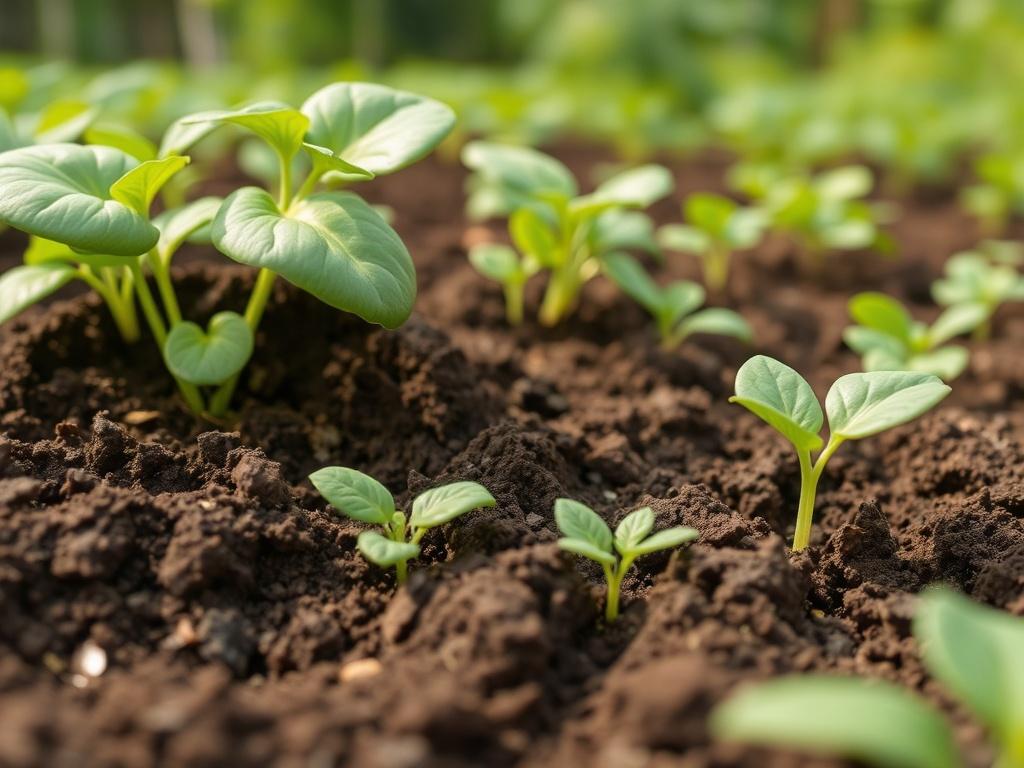
Soil is the single most important natural asset on your farm. Healthy soils hold water better, resist erosion, support beneficial microbes, and buffer crops against stress. Investing in soil health gives you high returns in resilience.
Cover crops and living mulches
Cover crops protect soil from erosion, improve water infiltration, suppress weeds, and build organic matter. They also offer flexibility — legumes add nitrogen back into the system, grasses add biomass, and deep-rooted species improve soil structure. Choose cover crops suited to your climate and rotation, and terminate them in a way that conserves soil moisture when needed.
Reduced tillage and no‑till
Frequent tillage breaks up soil structure and accelerates organic matter loss. By reducing tillage, you maintain soil aggregates, improve microbial communities, and increase carbon sequestration. No‑till systems can require new management skills (herbicide timing, seeding techniques), but they pay dividends in resilience, especially where heavy rains or droughts are a risk.
Organic matter and compost
Adding compost or incorporating crop residues builds soil organic matter, which increases water-holding capacity and nutrient availability. Even modest increases in organic matter can make a big difference in drought years by allowing plants to access more water between rainfall events.
Soil testing and nutrient cycling
Regular soil tests let you apply nutrients precisely rather than by guesswork. Integrated nutrient management — combining manure, compost, cover crops, and mineral fertilizers where needed — maintains fertility while minimizing runoff and pollution.
Water Management: Use Less, Store More, and Be Efficient
Water constraints are among the most pressing climate challenges. The goal is simple: match water supply to crop demand more effectively and create buffers for dry periods.
Improve irrigation efficiency
Drip irrigation, micro-sprinklers, and well-designed pivot systems deliver water where and when plants need it, reducing evaporation and runoff. These systems also allow for fertigation (applying nutrients through irrigation), which can improve nutrient-use efficiency.
Recharge and store water
Options include on-farm reservoirs, managed aquifer recharge using infiltration basins, rainwater harvesting from buildings, and contour swales that slow runoff and increase infiltration. Even small changes like reshaping compacted areas to encourage ponding in strategic places can help recharge soils.
Soil and landscape practices that conserve moisture
Mulching, cover crops, and maintaining crop residues reduce evaporation and moderate soil temperatures. On a landscape scale, maintaining or restoring riparian buffers and wetlands can slow water flow and increase infiltration.
Smart scheduling and sensors
Soil moisture sensors, evapotranspiration data, and plant stress indicators help you irrigate only when necessary. Scheduling irrigation based on plant-available water, rather than feelings or calendar dates, saves water and reduces disease pressure from overwatering.
Crop Choices and Diversification: Spread the Risk
Diversity is a natural hedge against uncertainty. Whether through crop rotations, intercropping, or adding new enterprises, diversification reduces dependence on any single climate-sensitive crop.
Choose climate-resilient varieties
Plant breeding has produced varieties more tolerant to heat, drought, salinity, and new pest pressures. Explore seed trials, work with extension services, and test small batches before scaling up. Sometimes older or regionally adapted varieties outperform modern ones under stress.
Mix perennials and annuals
Perennials (orchards, agroforestry, forage grasses) stabilize soils, sequester carbon, and often withstand extreme events better than annuals. Integrating trees with crops or livestock (silvopasture, alley cropping) can diversify income while providing shade, windbreaks, and microclimate moderation.
Stagger plantings and extend harvest windows
Planting the same crop in successive waves reduces the risk that a single weather event wipes out the entire harvest. Extending harvest windows also helps with labor flexibility and market timing.
Include cover crops and green manures
Beyond soil benefits, cover crops can be fodder for livestock, or integrated into marketable forage systems, creating additional income streams while building resilience.
Livestock Strategies: Managing Heat, Feed, and Disease
Animals bring unique resilience challenges and opportunities. Heat stress, altered forage quality, and disease patterns are likely to shift with climate change.
Shade, water, and ventilation
Simple infrastructure investments — shade structures, cooling systems, and well-ventilated barns — reduce heat stress, which can otherwise lower productivity and fertility. Provide reliable clean water and multiple access points to prevent crowding during hot periods.
Pasture management and feed diversity
Rotational grazing and maintaining a mix of forage species improves pasture resilience to drought and pests. Stockpiling forage and establishing drought-tolerant forage crops provide buffers in lean years. Consider supplementing with conserved forages (hay, silage) and exploring alternative feed sources when supply chains are disrupted.
Biosecurity and veterinary planning
Changing climates can introduce new pathogens and expand the range of vectors like ticks and flies. Strong biosecurity, vaccination plans, and working closely with veterinarians help detect and manage disease outbreaks early.
Infrastructure and Energy: Building Durable, Flexible Systems
As storms intensify and temperatures climb, infrastructure and energy systems need to be robust and adaptable.
Design for extremes
Assess buildings, drainage, roads, and fences for vulnerabilities to flooding, wind, and heat. Simple modifications — elevating electrical equipment, protecting key access routes, creating sacrificial areas that absorb floodwaters — can reduce damage in extreme events.
Energy resilience and renewables
On-site renewable energy (solar, small-scale wind, biomass) reduces dependence on vulnerable grids. Energy storage systems and backup generators help maintain critical systems like irrigation or refrigeration during outages. Energy efficiency investments (LED lighting, efficient pumps) reduce ongoing costs and make renewables more effective.
Storage and cold chain management
For farms that rely on refrigerated storage or processed products, ensuring reliable cold chain systems is key. Consider modular, scalable refrigeration with backup power, and plan for increased cooling needs during hotter seasons.
Technology and Data: Make Smarter Decisions
Technology isn’t a silver bullet, but when used appropriately it amplifies knowledge and efficiency.
Remote sensing and precision agriculture
Drones, satellite imagery, and sensors help monitor crop health, soil moisture, and pest outbreaks across large areas. Early detection allows targeted interventions, saving time, inputs, and environmental impact.
Decision support tools
Tools that translate climate data into practical farm decisions — planting windows, irrigation schedules, or pest risk alerts — are increasingly accessible. Start with simple smartphone apps and build up to more complex farm management platforms as your needs and comfort grow.
Record-keeping and monitoring
Good records let you learn faster. Track yields, input costs, water use, and weather responses so you can see what works over time. Monitoring is also essential for accessing some incentive programs or insurance products that require proof of adaptive practices.
Financial Tools and Risk Management
Adaptation often requires capital. Fortunately, a growing array of financial tools can support resilience investments.
Insurance and disaster relief
Crop insurance, livestock coverage, and index-based insurance products help spread risk. Understand the terms and exclusions of each policy and consider combining insurance with on-farm risk reduction for the best outcomes.
Grants, loans, and incentives
Government programs, low-interest loans, conservation grants, and utility rebates can subsidize efficiency upgrades, renewable energy projects, and water storage systems. Keep an eye on new funding streams as climate programs expand.
Value‑added enterprises and market diversification
Processing, direct marketing, or diversifying into new products can stabilize income. Longer-term contracts, community-supported agriculture (CSA), and cooperative arrangements can reduce price volatility and create loyal customer bases.
Community, Information, and Policy Engagement
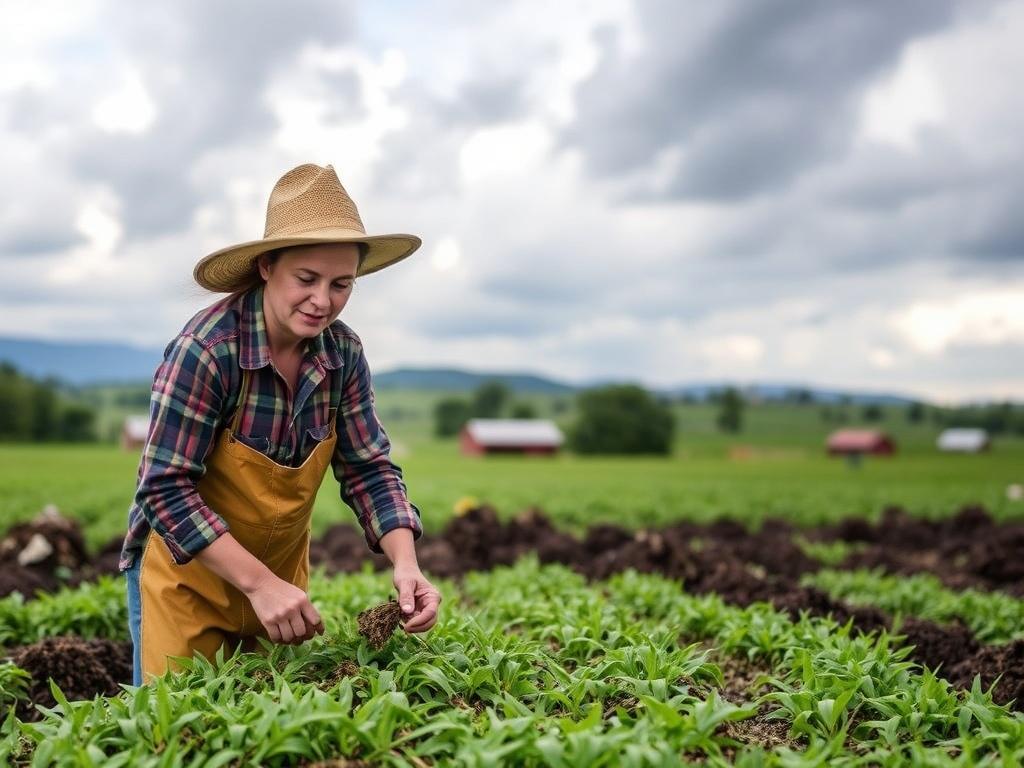
No farm operates in isolation. Community partnerships and engagement in policy shape the broader context for resilience.
Shared resources and cooperative approaches
Shared equipment, community water storage, cooperative processing facilities, and pooled purchasing lower costs and spread risk. Cooperative grazing agreements or shared cover crop seed purchases are small examples that scale up resilience.
Participate in planning and advocacy
Farmers’ voices are crucial in shaping local and regional policy on water allocation, land-use planning, and disaster response. Engage with local extension agents, water districts, and policy forums to advocate for practical, fair solutions.
Knowledge networks and peer learning
Farmers learn from each other. Field days, farmer-to-farmer mentorship, and local demonstration sites accelerate adoption of resilient practices and reduce trial-and-error costs.
Practical Roadmap: Putting It Together on Your Farm
Creating a plan doesn’t need to be complicated. Here’s a simple template you can adapt:
- Step 1: Gather local climate and water data — understand what is changing.
- Step 2: Identify top 3 vulnerabilities for this season and next year.
- Step 3: Choose 1–2 high-impact, low-cost actions to implement this season (e.g., mulching, installing soil moisture sensors, staggered planting).
- Step 4: Plan one medium-term investment (1–3 years) such as a rainwater tank, drip irrigation retrofit, or shade structure.
- Step 5: Explore funding or cooperative options to support larger investments (e.g., renewable energy or major water storage).
- Step 6: Monitor results, keep good records, and revise the plan annually.
Example timeline
- Year 1: Soil testing, small-scale cover crop trial, purchase soil moisture sensors.
- Year 2: Install drip irrigation on a high-value block, begin rotational grazing on one paddock.
- Year 3: Build a water storage pond/recharge basin and test drought-tolerant crop varieties.
- Year 4–5: Integrate agroforestry elements, install solar panels for pumps, formalize cooperative arrangements for processing or marketing.
Tools, Resources, and Where to Learn More
Below is a simple table of common resilience strategies, expected benefits, and typical costs or effort levels. Use it as a starting point to prioritize.
| Strategy | Primary Benefit | Typical Cost / Effort | Time to See Benefits |
|---|---|---|---|
| Cover crops | Improved soil structure, reduced erosion, nitrogen fixation | Low to moderate (seed cost, management) | 1–3 seasons |
| Drip irrigation | Water savings, targeted fertigation | Moderate to high (equipment) | Immediate to 1 year |
| Compost addition | Increases organic matter and water-holding capacity | Low to moderate (labor or purchase) | 1 season to several years |
| Solar-powered pumps | Energy cost savings, resilience during outages | Moderate to high (installation) | Immediate to a few years |
| Managed rotational grazing | Improved pasture productivity and soil carbon | Low to moderate (fencing, water points) | 1–3 seasons |
| On-farm water storage (ponds/tanks) | Buffer for drought, irrigation security | Moderate to high (construction) | Immediate once installed |
| Agroforestry / windbreaks | Microclimate moderation, erosion control | Moderate (planting, maintenance) | Several years to decades |
Case Studies: Small, Medium, and Large Farm Examples
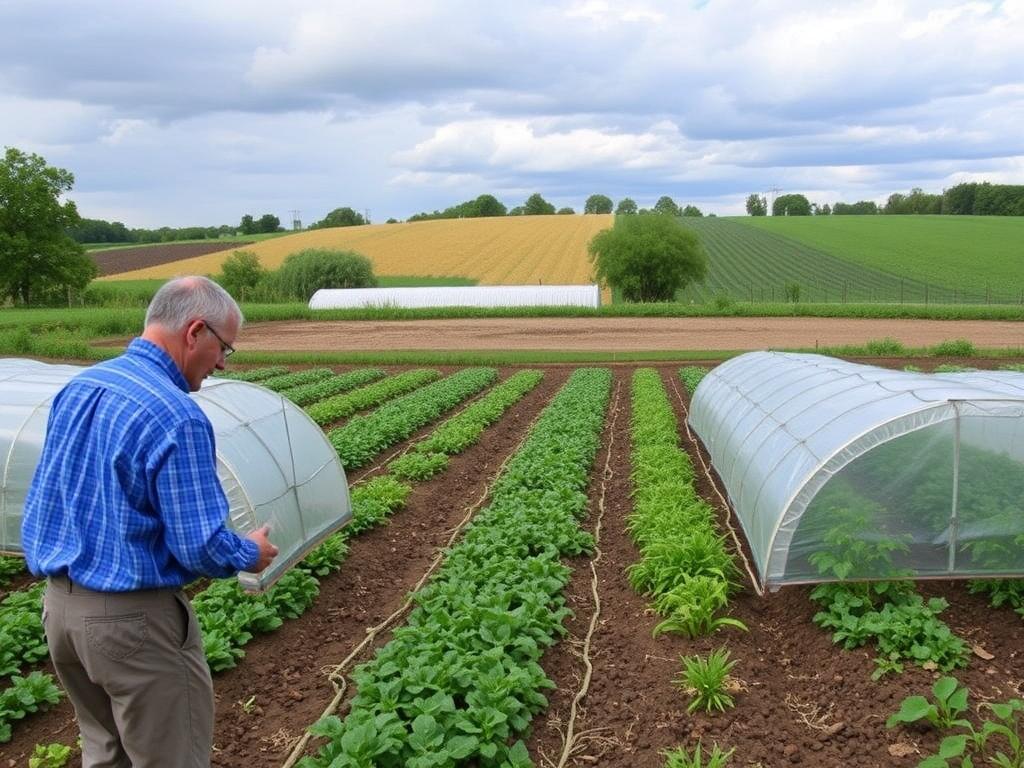
Small farm: Diversifying to reduce risk
A small vegetable grower facing more frequent heavy rains started by planting cover crops between beds and switching to raised beds to prevent root rot. They invested in a small greenhouse and staggered plantings to reduce total crop loss risk. By adding direct-market sales and a CSA subscription, the farm smoothed cash flow and earned a premium for consistent supply even in off‑seasons.
Medium farm: Water-smart practices
A family grain farm in a semi-arid region implemented rotational grazing to build organic matter on marginal fields, installed drip irrigation for high-value vegetable blocks, and constructed a recharge pond that doubled as a wildlife habitat. The combined effect was improved drought resilience and diversified income from grazing leases and specialty crops.
Large farm: Scaling technology and renewables
A large corporate-owned farm retrofitted center pivots with variable-rate irrigation, deployed satellite-based crop monitoring, and installed a solar array to power irrigation pumps. They also established a long-term carbon-sequestration plan through reduced tillage and cover cropping, which opened new revenue streams via carbon credit sales.
Common Mistakes and How to Avoid Them
One-size-fits-all solutions
What works for one farm might fail on another. Local knowledge matters. Always pilot new practices on a small scale and adapt based on your results.
Underestimating maintenance and labor
New systems require planning for maintenance. Drip systems clog, perennial plantings need early care, and sensors need calibration. Factor ongoing labor and costs into your decisions.
Ignoring social and market dimensions
Resilience is not just technical. Markets, labor availability, and community relationships influence outcomes. Cultivate good relationships with buyers, local suppliers, and neighbors to navigate shocks.
Checklist: Quick Actions You Can Start This Season
- Conduct a simple vulnerability assessment of fields, water, and livestock.
- Start cover cropping on one test block.
- Install at least one soil moisture sensor.
- Build or repair shade structures and ensure clean water access for animals.
- Talk to your insurer about current cover options and exclusions.
- Explore local grants or rebate programs for irrigation or renewable energy.
- Join a farmer learning group or attend a field day.
Measuring success
Keep it simple: track yield stability, input costs, water use per unit of production, and incidents of crop or animal loss from extreme events. These indicators show whether your resilience investments are paying off.
Final Thoughts on Mindset: Adaptation Is an Ongoing Journey
Resilience is as much a mindset as a set of practices. It’s about expecting change, experimenting early and often, and learning from both successes and failures. Small changes compound over time: improving soil by a percentage point each year, adding shade trees gradually, or incrementally upgrading irrigation all yield greater stability decades down the road. Engage neighbors, share learning, and stay connected to new research. The pace of innovation in agriculture is rapid; being open to incremental adaptation keeps you ahead of shocks.
Conclusion
Future-proofing your farm against climate change is not about making one big bet; it’s about layering practical actions — improving soil health, conserving and storing water, diversifying enterprises, upgrading infrastructure, using data wisely, and securing financial tools — to reduce vulnerability and increase flexibility. Start small, prioritize the highest-impact measures for your situation, test and record what works, and build partnerships that amplify your resources. With steady attention and adaptation, your farm can remain productive, profitable, and resilient for generations to come.
Оценивайте статью, делитесь материалом с друзьями в социальных сетях, а также высказывайте свое мнение в обсуждении ниже! ![]()
